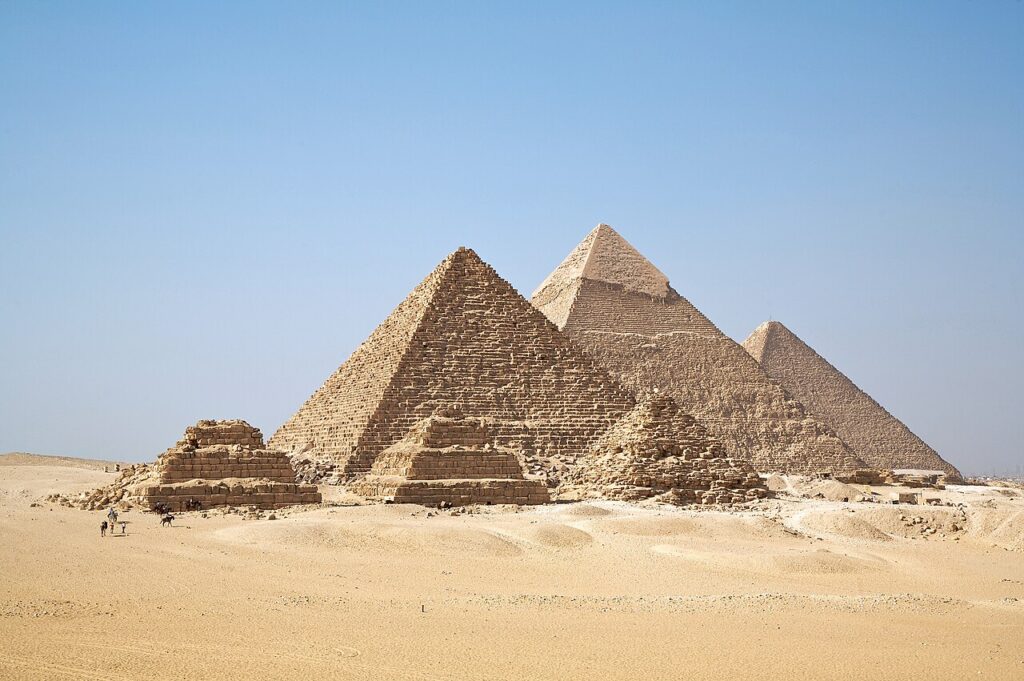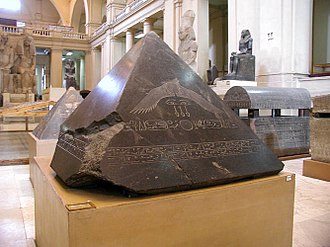The Pyramid Shape in Ancient Egypt: Function, Symbolism, and Religious Role
Introduction to the Pyramid Shape in Ancient Egypt
The pyramid shape stands as one of the most iconic symbols of ancient Egyptian civilization. Beyond being monumental tombs for pharaohs, pyramids embodied profound religious symbolism, reflecting the Egyptian understanding of the cosmos, the afterlife, and the eternal role of kingship. From the smooth-sided pyramids of Giza to earlier step pyramids, this form was not just an architectural choice but a spiritual statement.
The Pyramid as a Symbol of the Sun’s Rays
Connection to the Solar Cult
The Egyptians associated the pyramid shape with the sun god Ra. The sloping sides were believed to represent the rays of the sun descending to Earth, guiding the pharaoh’s soul upwards toward the heavens. This cosmic symbolism tied the pharaoh’s afterlife journey directly to the daily rebirth of the sun.
Pyramidion and the Sunlight Reflection
At the very top of the pyramid stood the pyramidion, often covered in gold or electrum to reflect sunlight. This mirrored the divine brilliance of the sun, ensuring the pyramid functioned as both a beacon of eternity and a direct link between heaven and earth.
Religious and Funerary Functions of the Pyramid
The Pharaoh’s Eternal Home
Pyramids were primarily royal tombs, designed to protect the king’s body and his ka (life force). Egyptians believed that by preserving the pharaoh’s body in the pyramid, his soul could achieve eternal rebirth and watch over Egypt forever.
Alignment with the Cosmos
Most pyramids were carefully aligned with the cardinal directions and celestial bodies. The Great Pyramid of Giza, for instance, aligns almost perfectly with true north. This alignment reflected the cosmic order (Maat), reinforcing the pharaoh’s divine role as the maintainer of universal balance.
The Pyramid as a Sacred Mountain
The pyramid also symbolized the primeval mound (Benben stone), the first land that emerged from the primordial waters of chaos in Egyptian mythology. Building pyramids was, therefore, a symbolic recreation of creation itself, linking each pharaoh’s tomb with the cosmic origin of life.
Social and Political Importance of the Pyramid
Beyond religion, pyramids served as political statements of power. Their massive scale demonstrated the wealth, authority, and organizational ability of the state. They also united thousands of workers in a sacred national project, reinforcing loyalty to the divine king.
Legacy and Eternal Symbolism
Even after pyramid building declined in the New Kingdom, the pyramid shape lived on in smaller pyramidal chapels and as a symbol of resurrection. Today, pyramids remain eternal icons of Egypt’s cultural identity, admired for their grandeur and spiritual depth.
Conclusion
The pyramid shape in ancient Egypt was far more than monumental architecture. It was a sacred symbol of solar power, cosmic harmony, eternal kingship, and rebirth. Its role in Egyptian religion ensured that it became the eternal image of pharaonic civilization—standing tall for thousands of years as a bridge between the earthly and the divine


